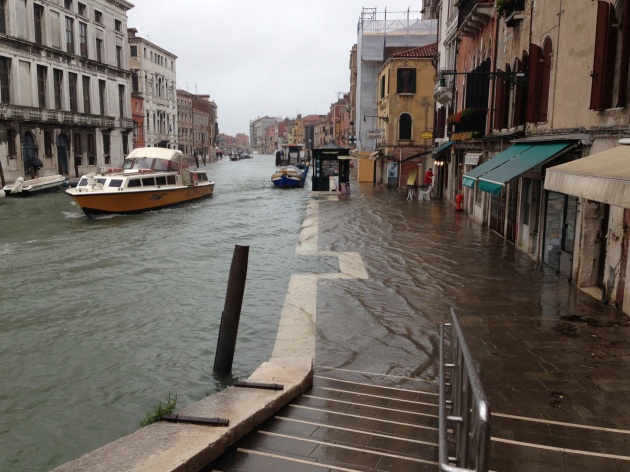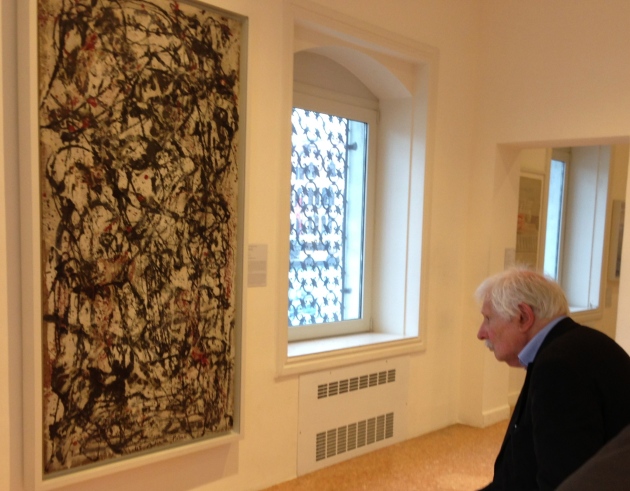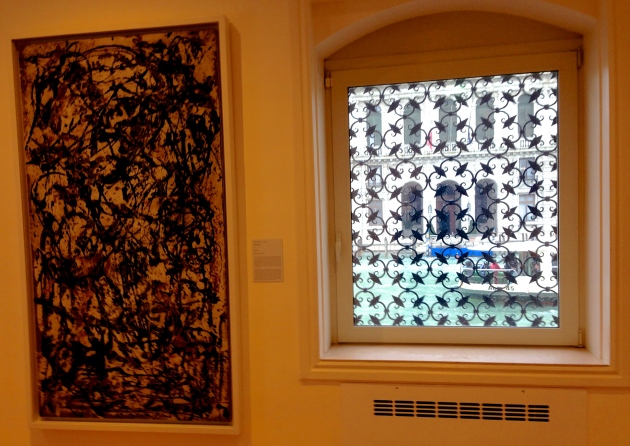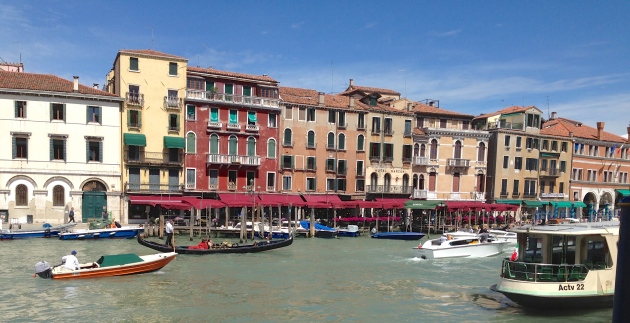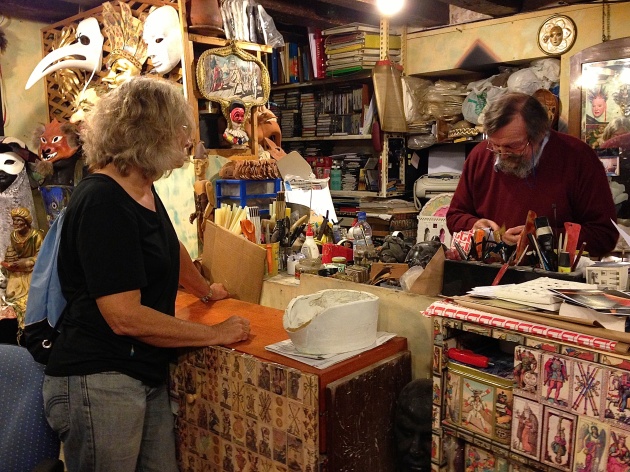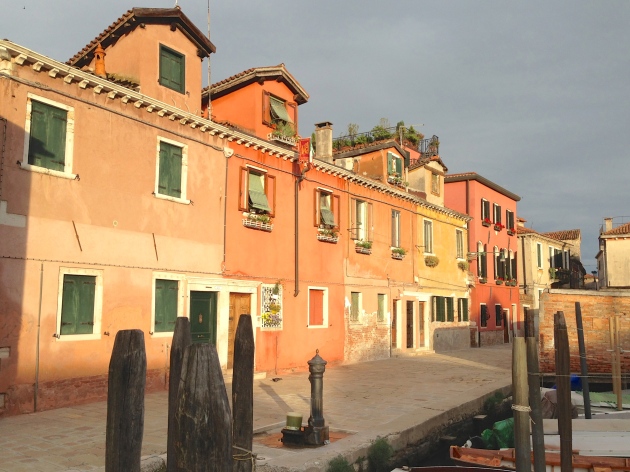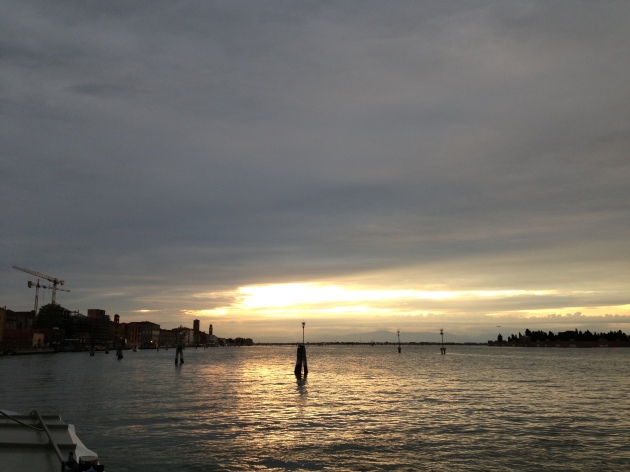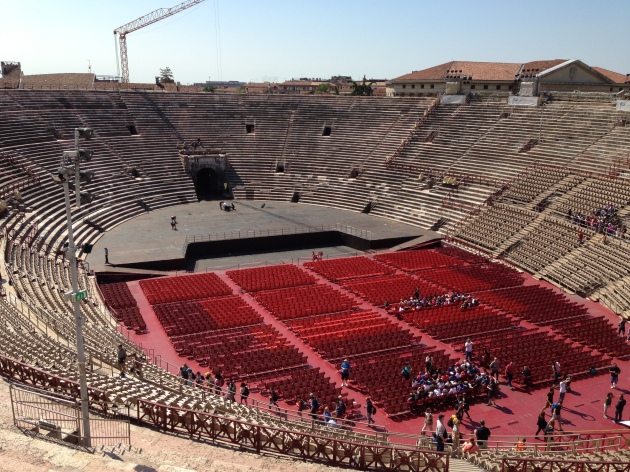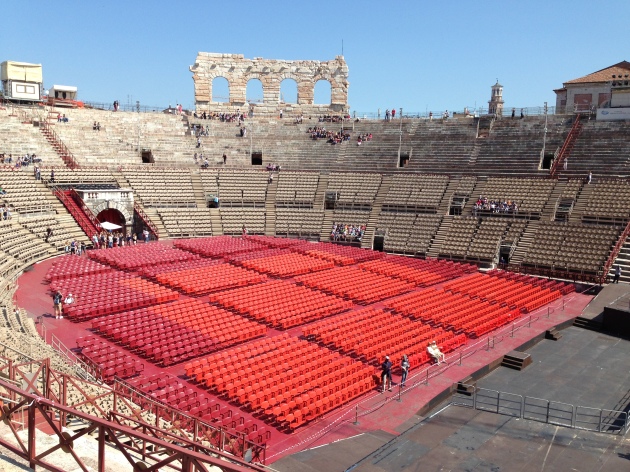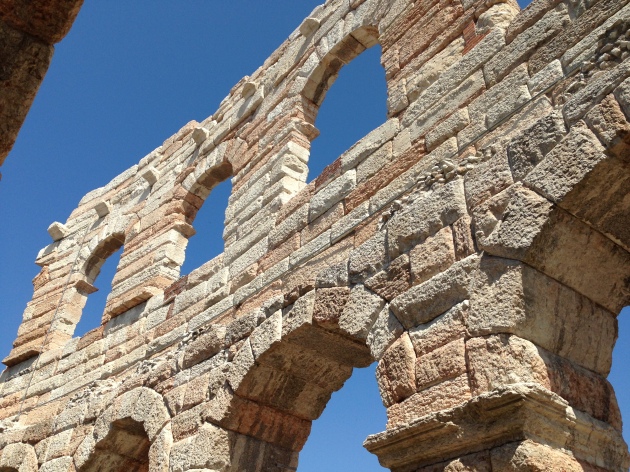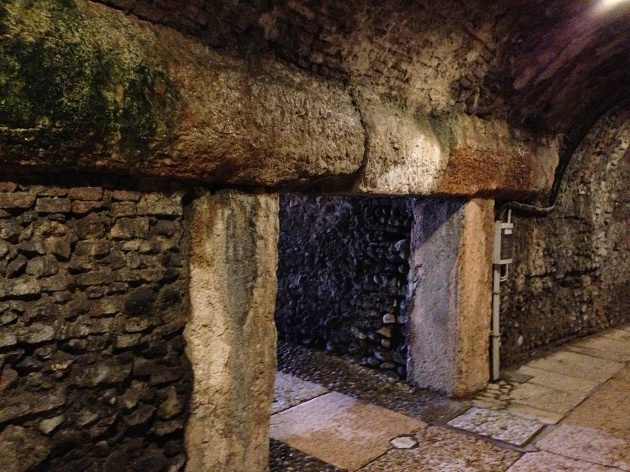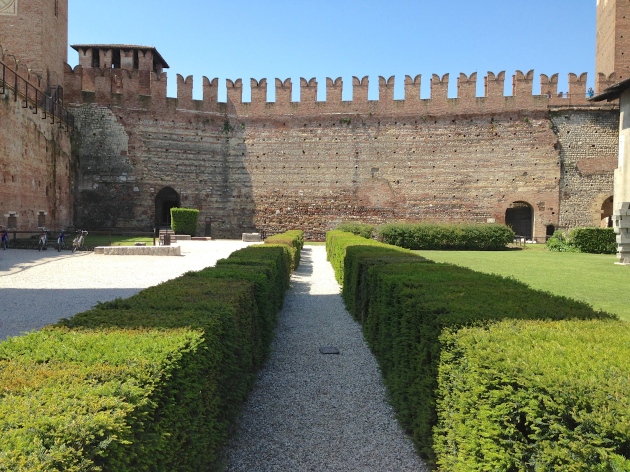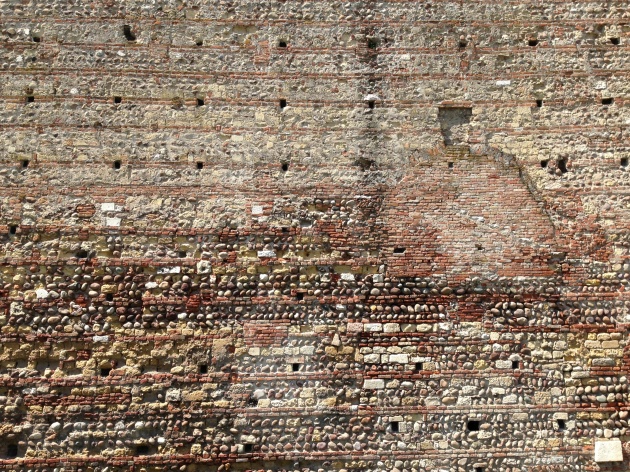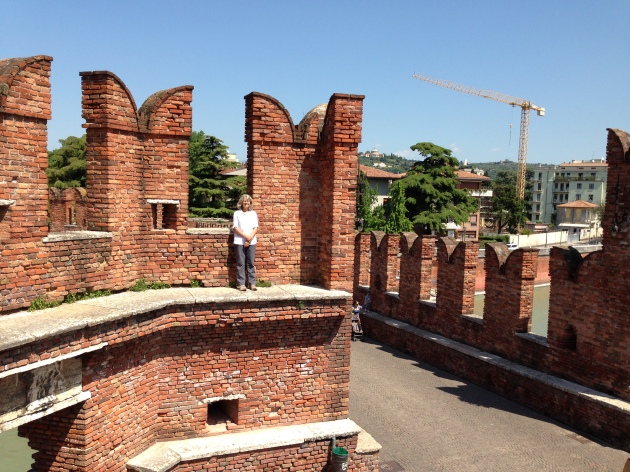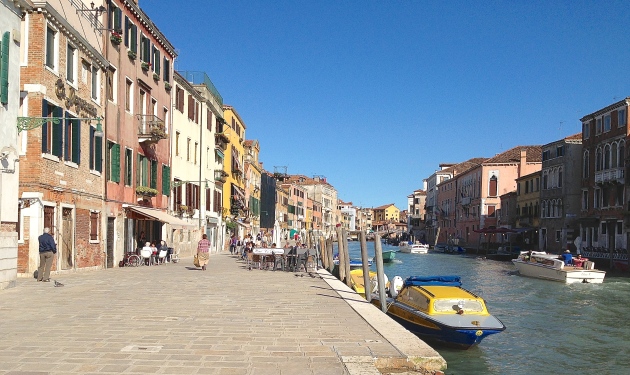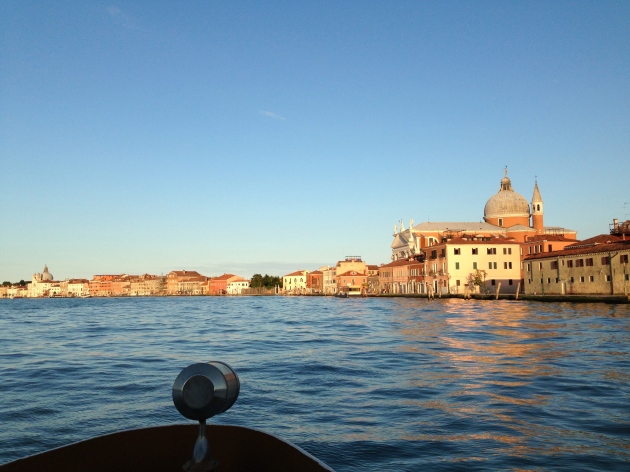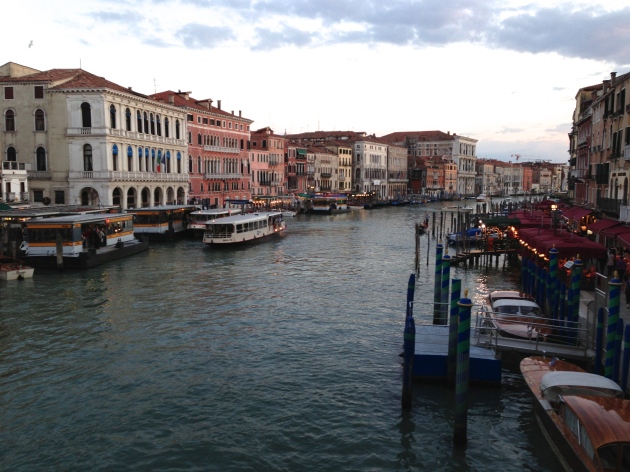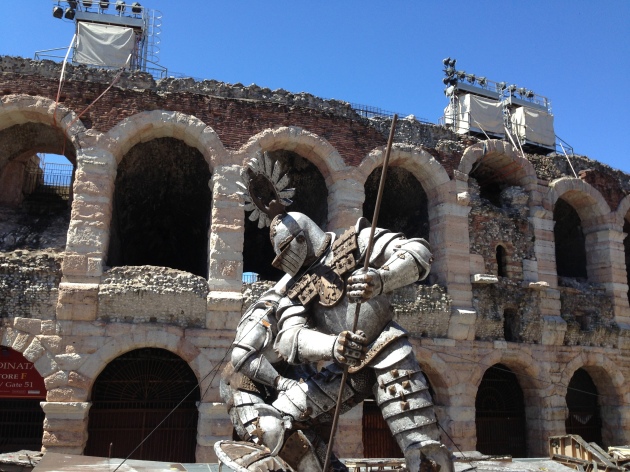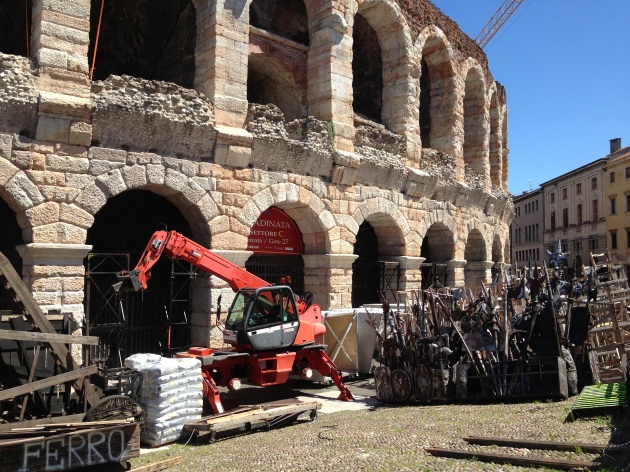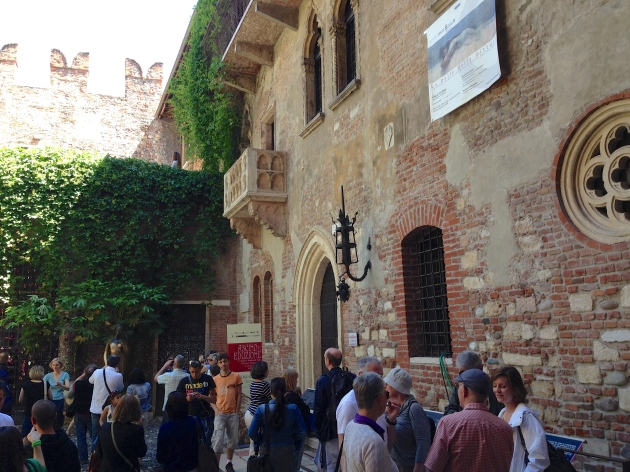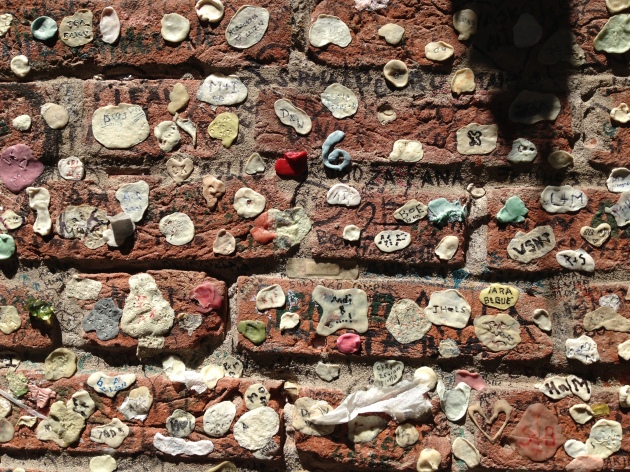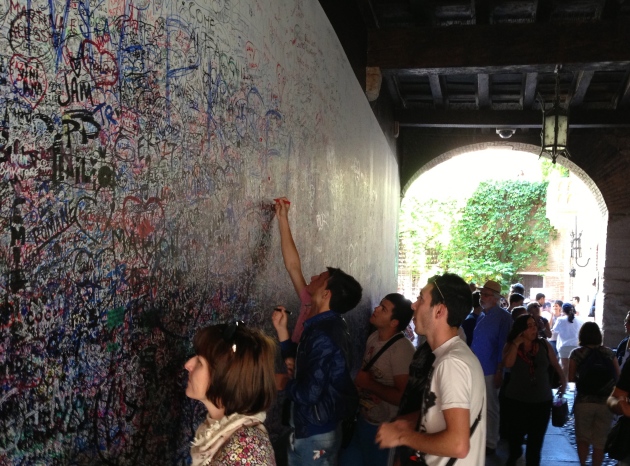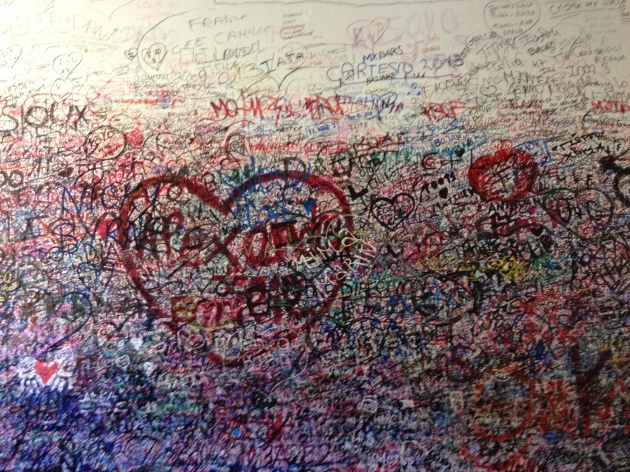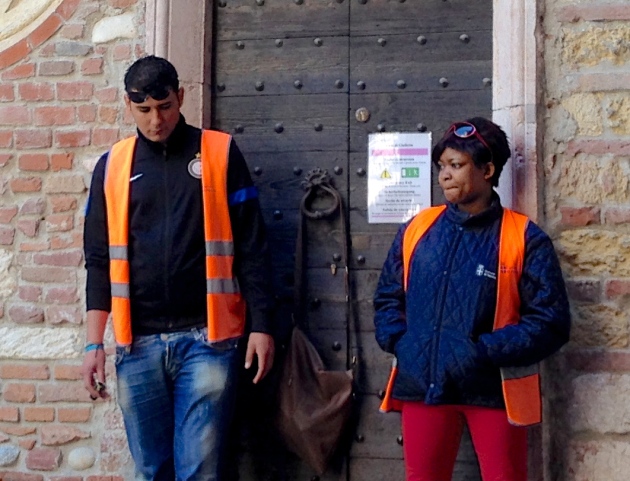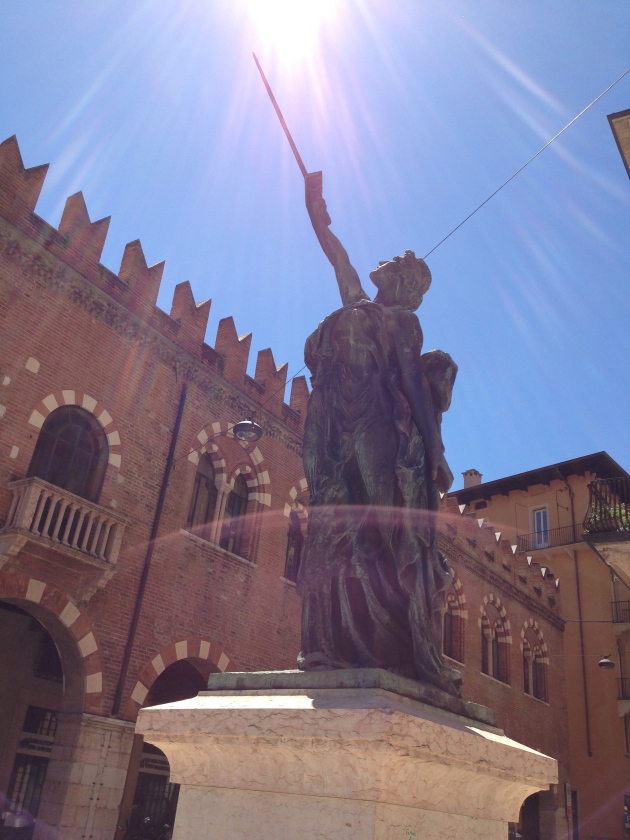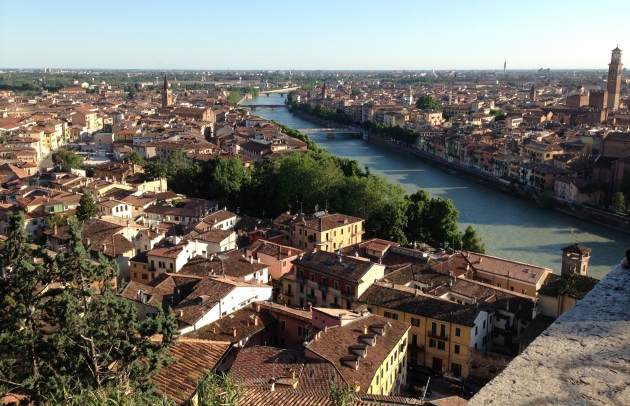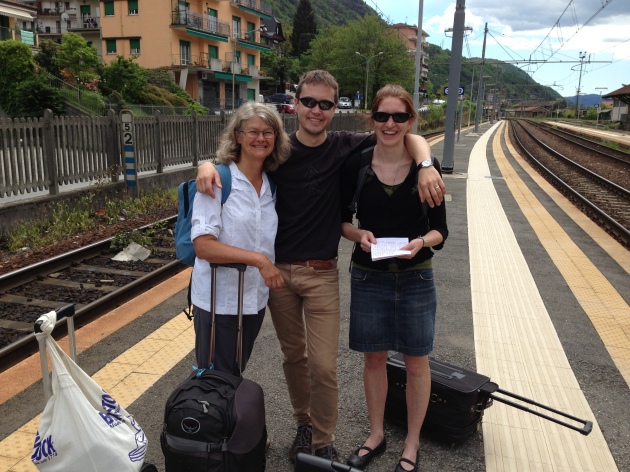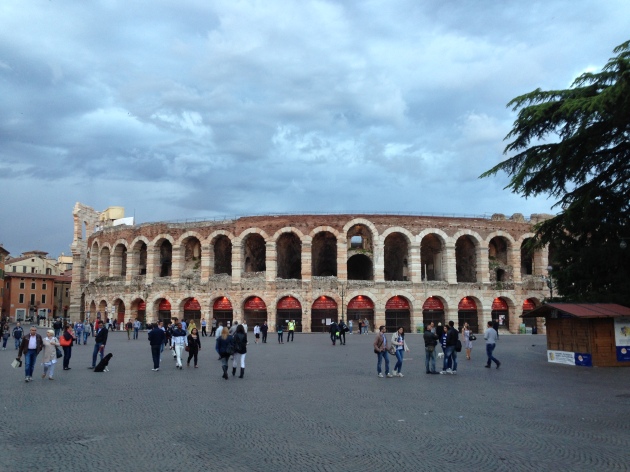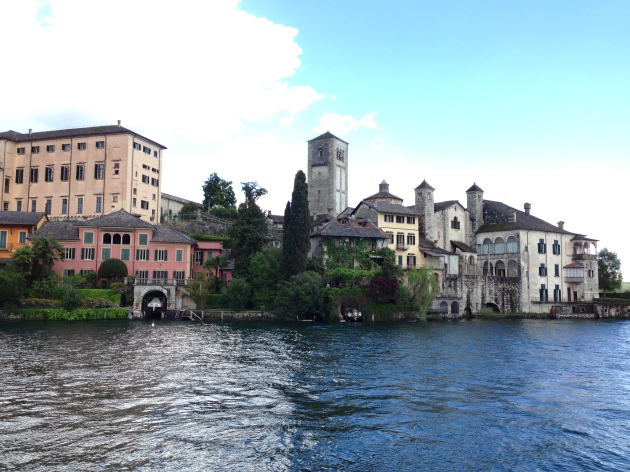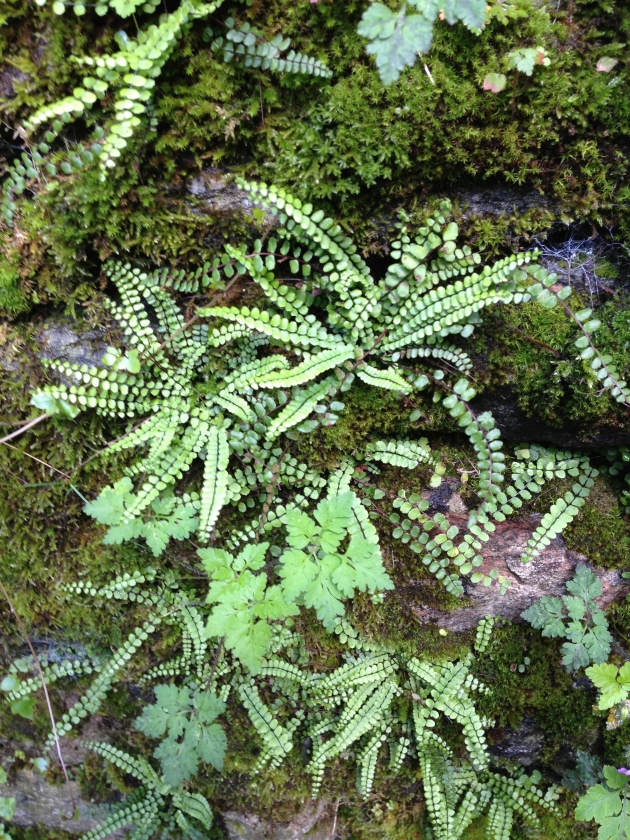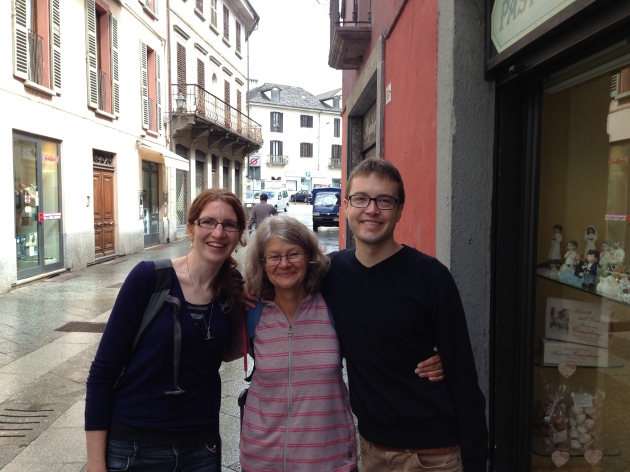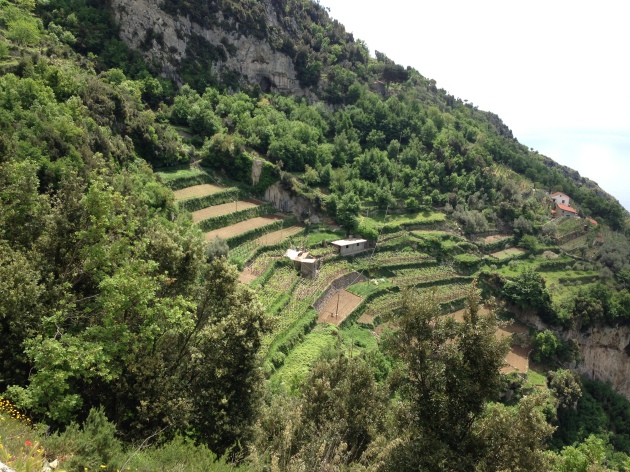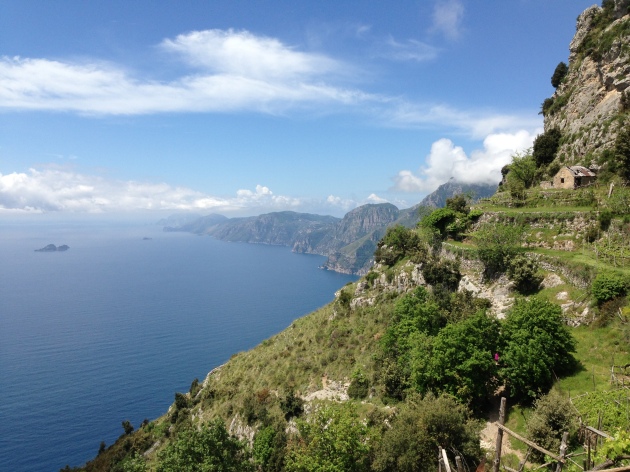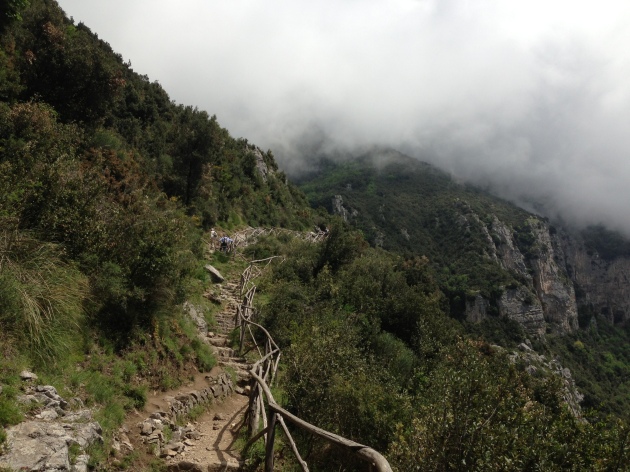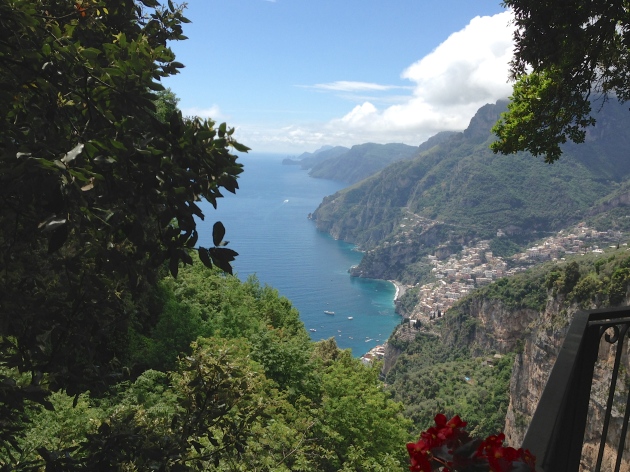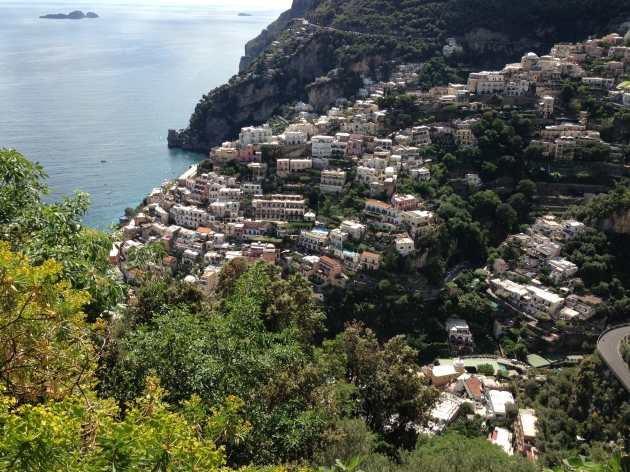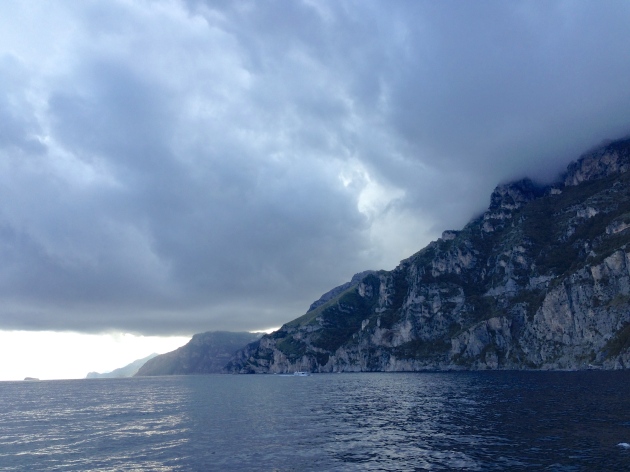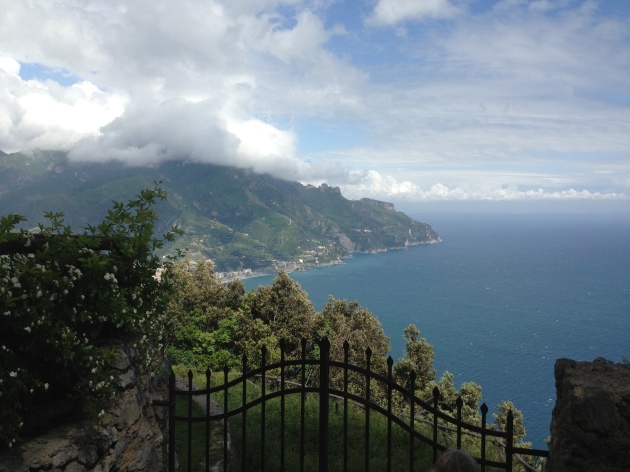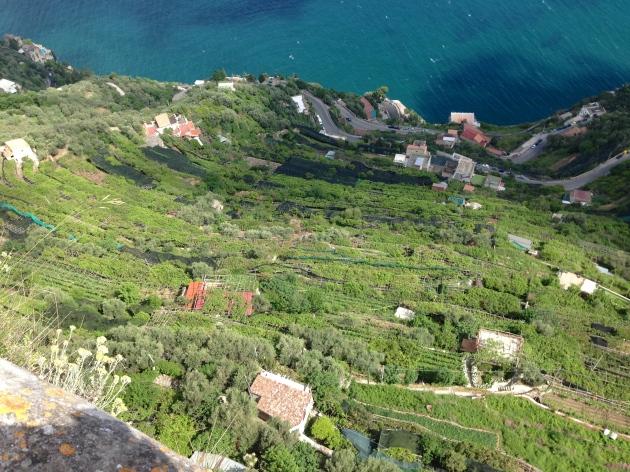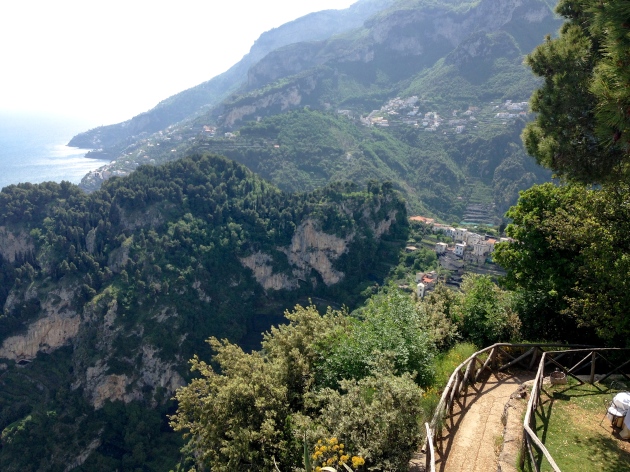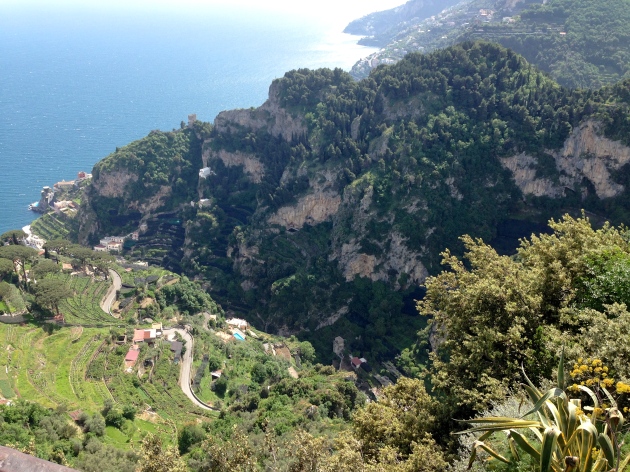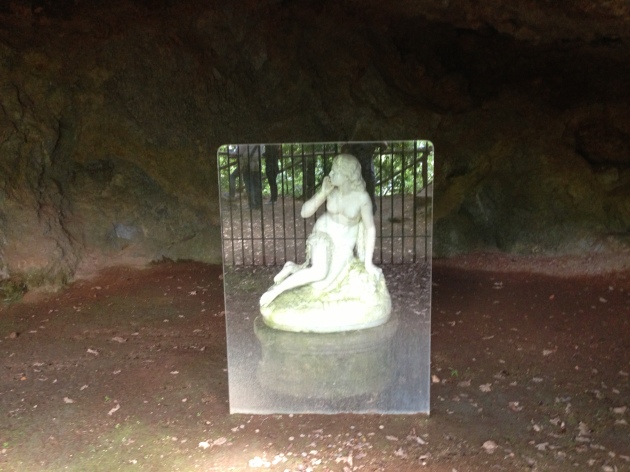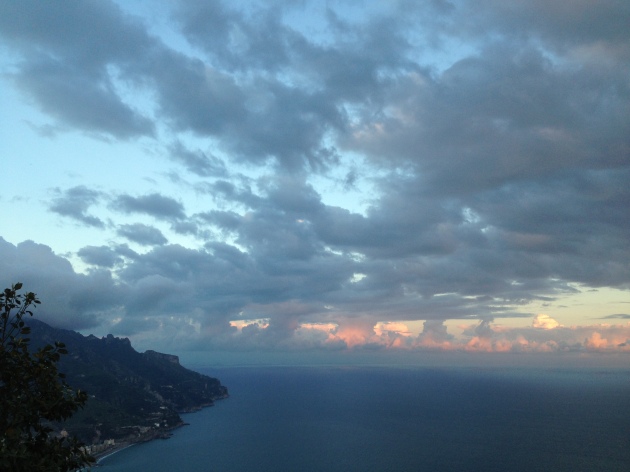We wake to a rainy morning; Venice is experiencing a flood, with water across many of the footpaths along the canals. We learn later that it is quite unexpected, and that the usual warning system for floods has not abounded.
We want to explore the Jewish quarter, which is near (east of) our apartment. However, some of the footpaths are impassable because of the flood, and the rain is getting heavier. Walking along our local canal, we’re greeted by a very friendly barber standing at the door of his shop; he tells us that the canal-side footpath is impassable a little further along, and that the right detour is in a bit, along a bit and out again – by chance, through the Jewish quarter. He also shows us the mark on his wall for a flood depth a couple of years ago – about half a metre above this flood, leaving his floor under 40 cm of water.
We follow his advice, change plans, and head for a nearby supermarket to get a few essentials. Finding one has been tricky – they are not on every corner – but Hilary has located one with Pocket Earth (the iPhone app that has become an indispensible navigation tool to the point that we now call it the WPE, Wonderful Pocket Earth). On the evidence of the supermarket we’ve found, they’re both well hidden and tiny. This one is up a long, dark alleyway only a metre wide, and is given away by a procession of people passing up and down the alley with small shopping trolleys. On reflection it’s clear why the supermarkets are small and (presumably) well spaced across the city: everything has to be carried home by hand or in a hand-wheeled cart. Filling the car with a month’s worth of food is not an option.
We have a lunch of bread, tomato and cheese at the apartment. In the afternoon (in the rain and through flooded streets and canals) we take a vaporetto to the Peggy Guggenheim Museum on the Grand Canal near San Marco. It’s a spectacular collection of 20th century art – Picasso, Max Ernst, Kandinsky, Mondrian, Alexander Calder, Joan Miro, Salvador Dali, Jean Arp, Henry Moore, Jackson Pollock, and many others – collected by Peggy Guggenheim throughout her life. She spent the last 30 years of that long and influential life here, in this palatial house in Venice that is now her gallery.
For dinner we go to the great local trattoria we’d enjoyed 5 years ago, and had found again on Tuesday. It’s called Al Nono Risorto.

